When it comes to home decor, one of the simplest and most charming ways to enhance the exterior of your house is by adding window boxes. These delightful garden features bring a splash of color, texture, and life to your windows, creating a warm, welcoming atmosphere. Whether you’re aiming for a rustic cottage look, a modern urban aesthetic, or something in between, window boxes can complement virtually any architectural style. In this guide, we’ll explore how to use window boxes to add charm and color to your home, with tips on choosing the right plants, installation, and maintenance.
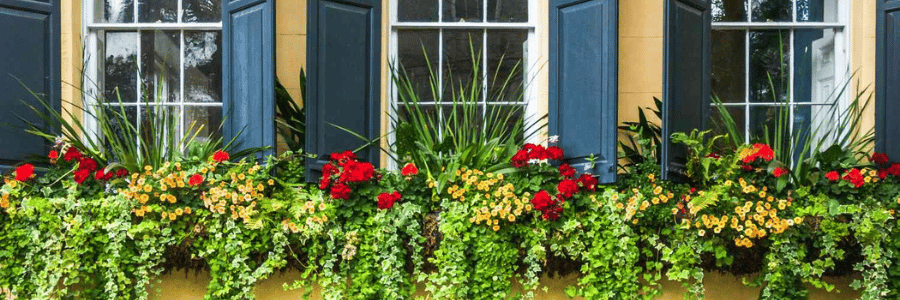
Why Choose Window Boxes?
Before diving into the specifics of how to use window boxes, let’s first look at why they’re such a great option for enhancing your home’s exterior.
- Instant Appeal: Window boxes offer a quick way to add beauty and character to your home. Even a simple arrangement of flowers or greenery can dramatically improve curb appeal and make your house stand out.
- Versatility: Window boxes can be customized to suit any season, style, or climate. Whether you want lush blooms in spring, bright foliage in summer, or festive greenery in winter, window boxes provide endless options for creativity.
- Space-Saving Garden: If you love gardening but have limited outdoor space, window boxes provide an excellent solution. They’re perfect for apartments, townhomes, or homes with small yards, allowing you to grow a variety of plants without taking up ground space.
- Eco-Friendly and Sustainable: Window boxes give you the opportunity to grow your own herbs, vegetables, or flowers, contributing to a more sustainable lifestyle. You can also choose environmentally friendly materials for your planters, helping to reduce your carbon footprint.
1. Choosing the Right Window Boxes for Your Home
The first step in creating a charming window box display is selecting the right container. The size, material, and design of your window box will set the tone for your outdoor decor. Here are a few things to consider when choosing the right box:
- Size and Fit: Make sure the window box fits comfortably under your window. It should be long enough to provide a balanced look but not so wide that it obstructs the window. Measure the width of your window to determine the ideal box length, leaving a few inches on either side for symmetry.
- Material: Window boxes come in a variety of materials, each offering different benefits. Common options include:
- Wood: Wood gives a rustic, natural feel to your home, perfect for traditional, farmhouse, or cottage-style houses. Cedar and redwood are particularly durable and weather-resistant. However, wood requires periodic maintenance to prevent rot.
- Metal: Metal boxes, such as those made from wrought iron or galvanized steel, offer a sleek and modern look. They’re often more durable and weather-resistant than wood, making them a great option for harsher climates.
- Plastic and Resin: These materials are lightweight, affordable, and come in a wide range of colors and styles. They’re also durable and require minimal maintenance, though they may not have the same aesthetic appeal as wood or metal.
- Fiberstone: A blend of fiberglass and stone, fiberstone boxes offer a contemporary look with the appearance of traditional stone planters but are much lighter and more durable.
- Design: The design of your window box should complement the architectural style of your home. For a more traditional look, choose a simple wooden box, while for modern homes, sleek metal or fiberstone boxes can provide a more polished, minimalist aesthetic. Consider color too—boxes in neutral tones like black, white, or gray work well with many styles, but bold colors can make a striking statement if you want to add extra vibrancy to your home.
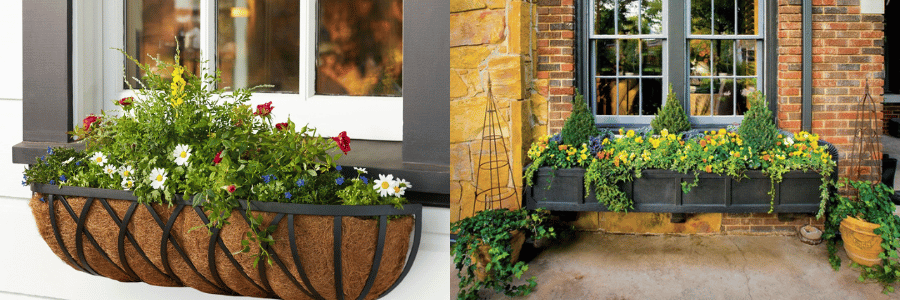
2. Selecting the Right Plants for Your Window Boxes
One of the most enjoyable aspects of window boxes is the ability to fill them with beautiful plants that reflect your personality and style. The key to success is selecting plants that thrive in your climate, suit your window’s exposure (sun, partial sun, or shade), and match your aesthetic goals.
- Seasonal Displays: Window boxes can be changed with the seasons, so you have the opportunity to refresh your look year-round.
- Spring and Summer: Opt for colorful annuals such as petunias, geraniums, lobelias, and marigolds. These flowers bloom profusely and offer a riot of colors, perfect for adding brightness to your home. If you’re looking for a cascading effect, consider plants like trailing ivy, begonias, or sweet potato vines.
- Fall: For autumn, consider planting hardy mums, ornamental kale, or asters. You can also add pumpkins, gourds, or dried corn stalks for a festive touch.
- Winter: Even in winter, your window boxes can add charm. Evergreen plants like boxwood, holly, and small pines work well for creating a winter wonderland effect. You can also fill your boxes with branches, twigs, and berries to give your window box a seasonal touch.
- Herbs and Edibles: Window boxes aren’t just for flowers—they can also be used to grow herbs and small vegetables. Basil, thyme, parsley, and rosemary are perfect for sunny windowsills, while lettuce, spinach, and strawberries work well in slightly shaded spots. A window box filled with fresh herbs can be both practical and beautiful, providing you with homegrown ingredients all year round.
- Consider Growth Habits: Think about how your plants will grow. Some plants, like petunias or ivy, have trailing habits, while others, like geraniums or marigolds, grow upward. A combination of these growth patterns can create a lush, layered look. When planting, aim to have a balance of low-growing, medium, and tall plants to create visual interest and texture.
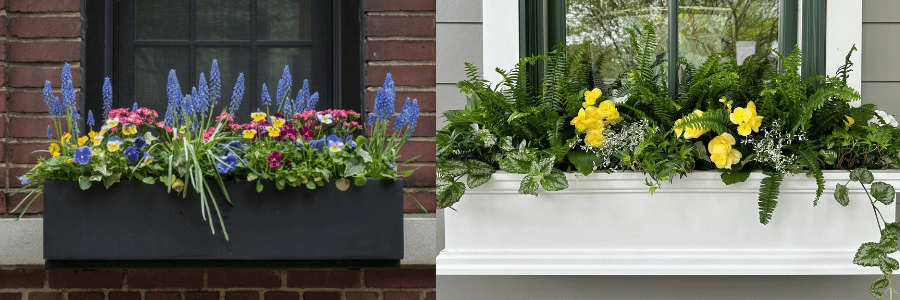
3. How to Plant Your Window Box
Once you’ve selected the perfect window box and plants, it’s time to get planting. Here’s a step-by-step guide to planting your window boxes for maximum impact:
- Prepare the Box: Before planting, line the inside of your window box with a plastic liner if it doesn’t already have one. This helps retain moisture and prevents the soil from washing out. Make sure the box has drainage holes so that excess water can escape. If the box doesn’t have drainage holes, use a drill to add a few.
- Add a Layer of Gravel: Place a layer of small gravel or pebbles at the bottom of the box. This improves drainage and prevents the roots from sitting in water, which could lead to root rot.
- Fill with Soil: Use a high-quality potting mix designed for container gardening. Fill the box about halfway with soil, making sure it’s evenly distributed.
- Plant Your Flowers or Plants: Begin by planting the largest plants first, spacing them evenly across the box. Then, fill in the gaps with smaller plants. Remember to leave enough space between plants to allow for growth.
- Watering and Care: After planting, give the box a thorough watering. Keep the soil consistently moist, but not soaking. During hot months, your window boxes may need to be watered every day, especially if they’re in full sun. Be sure to check regularly for signs of overwatering or underwatering. If necessary, fertilize the plants every few weeks with a balanced liquid fertilizer to encourage healthy growth.
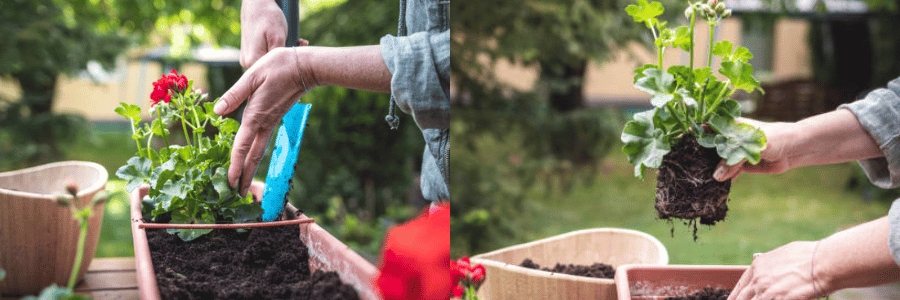
4. Installing Your Window Boxes
Installing a window box properly is essential to ensure it stays secure and functional. You don’t want your plants to end up on the ground below, especially during a strong windstorm! Here’s how to safely install your window box:
- Brackets or Mounting Hardware: Most window boxes come with mounting brackets that can be attached directly to the exterior of your home. For a more secure installation, use sturdy metal brackets that can hold the weight of the box and the soil. Alternatively, some window boxes are designed to rest on windowsills and have adjustable clips for added stability.
- Measure and Position: Before drilling any holes, measure the distance between the window box and your window to ensure it’s positioned correctly. The box should hang evenly, not too high or low, and should sit flat against the wall. Ensure there’s enough space for air circulation to prevent mold and mildew.
- Secure the Box: Once you’ve positioned the box, attach it securely using the provided brackets or screws. Make sure the box is level so it doesn’t tip over, causing the soil to spill out.
- Safety Tip: Be cautious when working with heavy planters, especially if you live on a second or third floor. If you’re unsure about installing window boxes yourself, consider hiring a professional to ensure safety and proper installation.
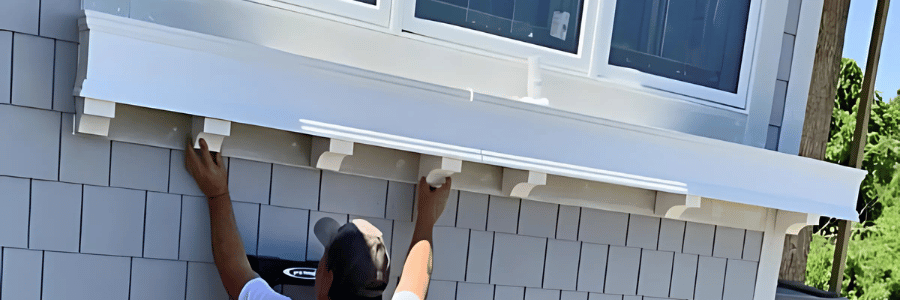
5. Caring for Your Window Boxes Year-Round
To keep your window boxes looking fresh and vibrant, it’s important to maintain them regularly:
- Prune and Deadhead: As plants grow, some may become leggy or have dead flowers. Regularly prune or deadhead your plants to keep them looking neat and encourage new growth.
- Refresh Soil and Plants: If you notice that your plants are becoming overcrowded or the soil is compacted, refresh your window box with new soil and replace any plants that are no longer thriving.
- Clean the Boxes: Over time, dirt, debris, and algae can build up on the boxes. Clean them periodically with a mild soap and water solution to keep them looking their best.

Conclusion
Window boxes are an easy yet impactful way to add charm, color, and personality to your home’s exterior. From selecting the right container and plants to installation and maintenance, a little attention to detail can go a long way in transforming your windows into beautiful, eye-catching focal points. Whether you choose to plant vibrant flowers for a burst of color or fragrant herbs for a functional garden, window boxes offer endless possibilities for beautifying your home year-round. Get creative, experiment with different plant combinations, and enjoy the rewarding process of watching your window boxes bloom and thrive.

